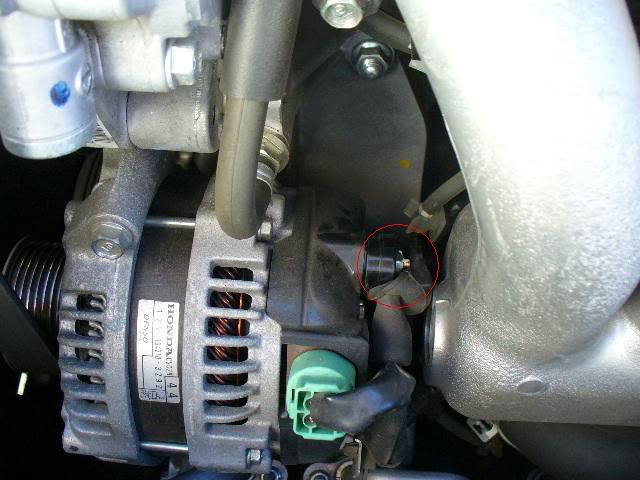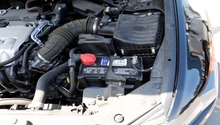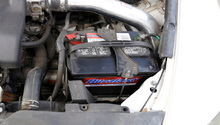Acura: Why Does the Battery Light Appear and Disappear?
This article will walk you through the process of dimming that pesky battery light once and for all.
This article applies to the Acura 3rd/4th Gen TL, RDX, MDX, 1st/2nd Gen TSX.
An intermittent battery light, or one that comes on and off at an interval, is a common issue among several Acura models. The battery light is designed to warn you that there is an issue with the battery, whether it be a bad cell, low charge, or other various issues with the charging system. Sometimes, the problem isn't with the battery itself, but rather the alternator or a cable or connection. To track down the source of the actual problem, you will need to do a little detective work. Keep reading and we'll walk you through the process of diagnosing an erratic battery light.

Materials Needed
- Multimeter
- Battery charger
- Replacement battery (optional)
- Replacement alternator (optional)
- Replacement drive belt (optional)
Step 1 – Test the battery
Oftentimes a battery will exhibit symptoms before it dies.
Checking your battery is a good first step, especially if yours is a few years old. First, you will want to make sure that it is fully charged before proceeding. Most modern battery chargers will tell you during the charging process if there is another issue with the battery, such as a bad cell. Also, make sure that your battery cables are secure and not loose. Once the battery is fully charged, turn your multi-meter to the 20-volt setting and place the positive end of the multimeter on the positive post of the battery, then the negative end on the negative post. Your battery should measure at 12.6 volts or above. Start the car and take another measurement, which should be between 13.7 and 14.7 volts. Any lower and your battery is likely bad.
If you don't have a multimeter, you can also take your battery to an auto parts store and they will test it (and your alternator) for free.

If your battery tests out fine, move on to Step 2.
Step 2 – Check the alternator
A bad alternator can fail to adequately charge the battery while the car is running.
First, check to make sure your alternator belt isn't loose, as this can cause issues with charging. Start the engine and visually verify that the alternator belt isn't slipping. Place the positive probe of the multimeter on the red terminal connector of the multimeter, then place the negative probe on a nearby bolt or part of the metal frame of the car. A good alternator will measure somewhere between 13.8 and 14.2 volts. Anything less can indicate a bad alternator, and anything over 15 volts can signal a faulty voltage regulator. Either way, the alternator should be replaced.

If your alternator tests out fine, move on to Step 3.
Step 3 – Check the drive belt
A slipping belt can cause intermittent electrical issues.
Quite a few Acura owners have experienced intermittent battery light issues, specifically in rainy conditions. Water tends to get in the engine bay and on the belts, causing them to slip. This issue usually only occurs on cars that have worn belts, so inspect yours for wear and cracks. Regardless of whether this is the cause of your issue, putting on a fresh belt is never a bad idea considering the cheap price and potential for absolute failure when they break.

Related Discussions
- Battery indicator came on then went away - AcuraZine.com
- Battery light while driving in heavy rain - AcuraZine.com
- Battery indicator light comes on - AcuraZine.com






